Crafting Gratitude the Reggio Way: Simple Projects to Raise Thankful Kids
“The more you practice the art of thankfulness, the more you have to be thankful for.” Norman Vincent Peale
In our fast-paced world of instant gratification, teaching children to slow down and notice the good and the beautiful that surrounds them is a profound gift.
Gratitude, the practice of appreciating what we have and expressing thanks, isn’t just for us grown-ups. Research shows that when introduced early, gratitude helps children feel more connected to others, boosts their self-esteem and sense of well-being and even builds resilience. (Obeldobel and Kerns, 2021; Hussong et al, 2020; Emmonds, 2003) Although gratitude may feel like an abstract concept, there are simple and concrete ways to cultivate the practice with our young children.
Today’s post features some creative ideas to help make the act of practicing gratitude a natural part of your family’s life - a practice that extends far beyond the celebration of Thanksgiving day.

1. Start a Gratitude Ritual
Establishi...
8 Criteria for Choosing the Right Curriculum for your Kindergarten Child

How many times have you added a curriculum to your virtual shopping cart 🛒 only to second-guess your decision?
I get it!
Taking the leap into homeschooling your little one wasn't an easy decision, nor is selecting the "perfect" curriculum.
Spoiler: There is no one, "PERFECT," one-size-fits all curriculum.
However, there are certain universal criteria to help make your decision more informed and a little more grounded in educational research.
The following matrix includes a handy checklist of criteria you can use to score your curriculum contenders to ensure you're making the best possible decision for YOU and YOUR child. For each curriculum you're considering, head to the FAQ section and browse through the headings. These sections are typically where the important information can be found.
Read on for my top eight criteria for choosing the "right" curriculum for your early learner.
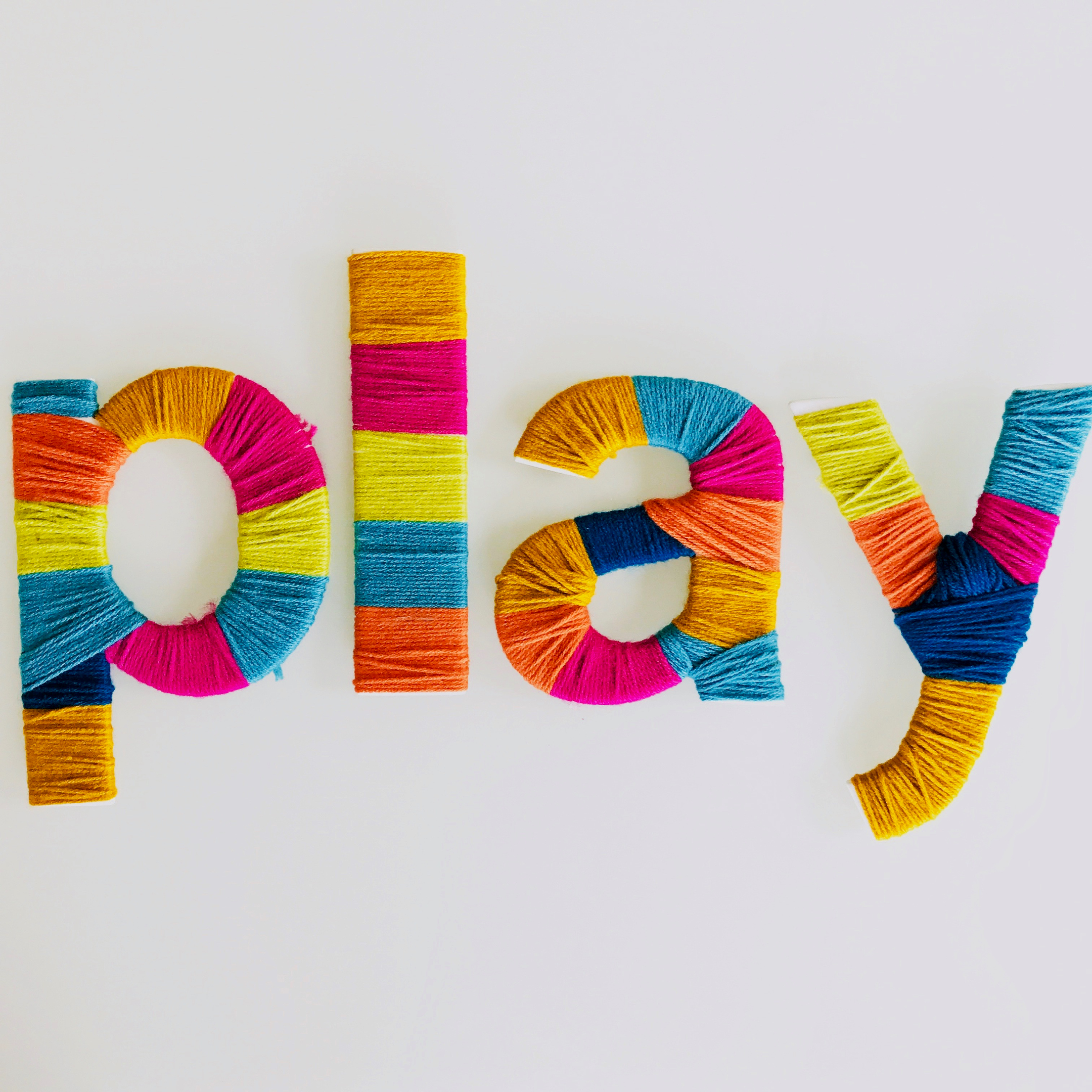
Play-focused approach
All the research points to the fact that paper-pencil worksheets are NO...
Reggio-Inspired Homeschool Space: A Collection of Ideas Big and Small
Are you inspired by the home learning spaces you see on Pinterest, Instagram and homeschool blogs?
Have you ever wanted to re-vamp your learning space but...
a) you don’t have the space,
b) you don’t have the budget or
c) you fear your kids will just destroy it anyway?
You’re in the right place!
Today’s blog post features a bank of ideas to create a Reggio-Inspired learning space in YOUR HOME - big or small, that fits YOUR budget Big or small, that suits your family and your lifestyle.
Today, our goal is to re-imagine our learning space to inspire playful curiosity, creative exploration and joyful learning.
Ask yourself these questions:
What does our learning environment communicate about learning?
About how we view children?
What are the values, habits and attitudes we wish to foster in our students, and how can we do achieve this through our learning environment?
When looking through a Reggio-inspired lens, great emphasis is placed on the physical space that surrounds our ki...
Homeschool Your Child in Under 1 Hour per Day
How can you teach your child to read, write and do math in under <1 hour per day?

The secret inside Artful Teaching. Joyful Learning.® is an integrated approach - one that folds in literacy and numeracy into everything you do. The program is rooted in a Reggio-inspired approach, and its holistic style is what makes teaching and learning so seamless, streamlined and beautiful.
This blog post and video show a typical "flow" to an ATJL homeschool day, and includes predictable, repeatable rhythms and routines to teach reading, writing and math in a way that's playful, engaging and research-based.

Morning Meeting ~ 15 minutes
Morning meeting is a practice used in most early childhood classrooms, and for good reason! It's a beautiful way to teach reading and writing in a way that doesn't require much planning or headspace. Here's how.
1. Morning Message: A daily message written to your child with a rotating bank of 5 literacy strategies. Your child "fixes" the message, using skills ...
The Rainbow Project
An investigation unfolds
One day, we were learning together at the table, a rainbow streamed through the window and projected itself onto the wall of our home learning space. This sparked much excitement for the girls. They had all kinds of theories about how the rainbow appeared (I knew it was because of the glass vase that sat in front of the window, but I didn't disclose that just yet!)
I decided to take advantage of their excitement and interest in this unintended provocation, and thought would be the perfect way to launch into an investigation about rainbows!
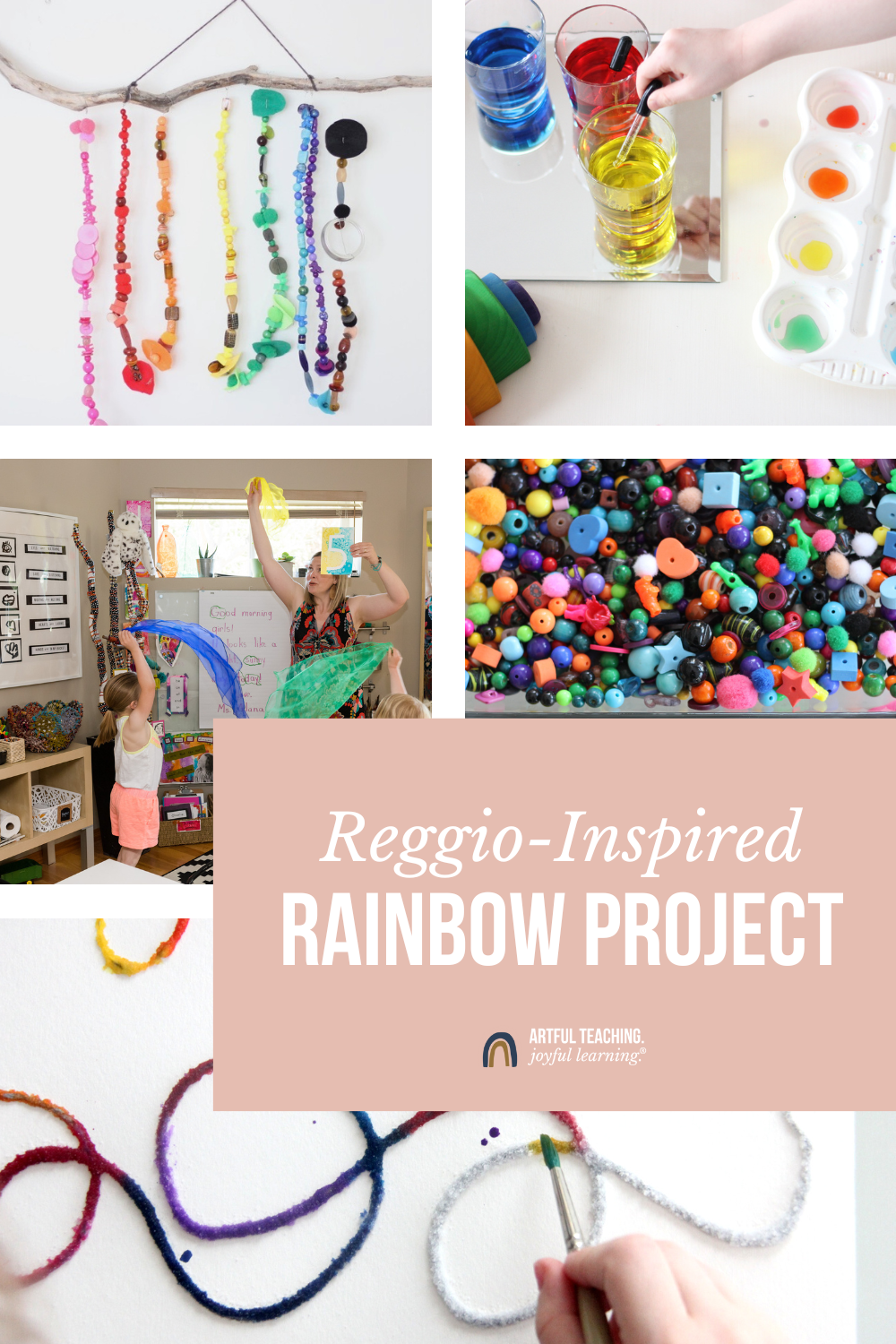
Prior Knowledge
I asked them what they already knew about rainbows, what they wondered about rainbows and they shared their theories about how rainbows form. Digging into prior knowledge is an important first step toward any new learning. Prior knowledge is like the "hook" on Velcro: any new learning needs something to cling to in order to develop new understanding.
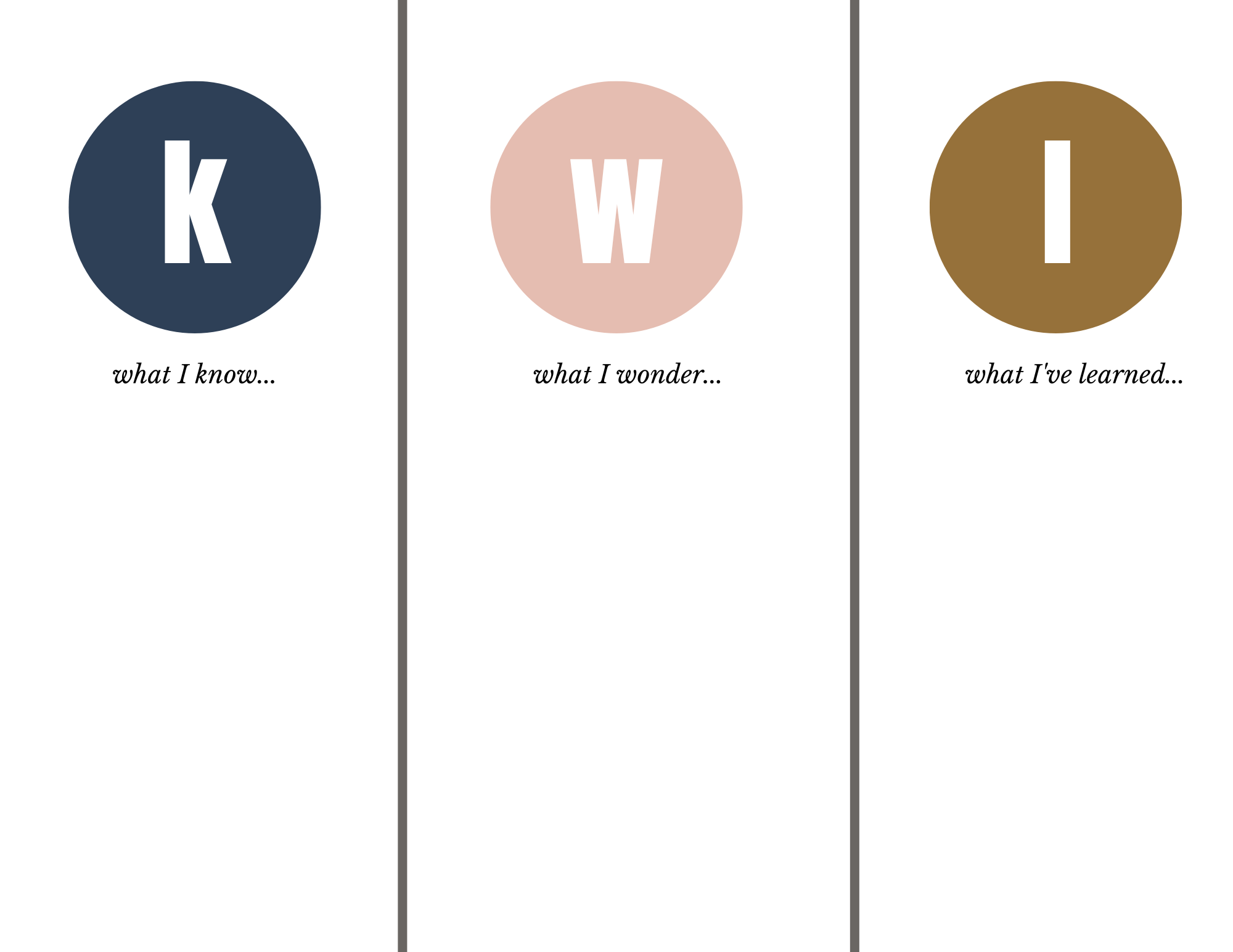
Curriculum Mapping
Later, I began mapping out some...
How to Choose a Curriculum for Young Learners
If you’re dabbling with the idea of homeschooling your little one this fall, you may be wondering about WHICH curriculum to use, and whether you even NEED a curriculum as you begin your homeschool journey.

And If you’re reading this, chances are you’re a parent who values play, creativity and nurturing your child’s wonder about the world.
You're likely the kind of parent who believes in a slow, gentle and natural approach to learning, and don’t like the idea of pushing hard academics, prolonged periods of seatwork, and countless worksheets and flashcards.
These ARE the good old days, and you know childhood’s too short and precious to sit at a desk for five hours a day.

Truth be told, you don’t NEED a curriculum for the early years.
Learning in the early years should be play-based, experiential, capturing our children’s wonder and delight in their curiosity. It should be free of pressure, gentle and slow.
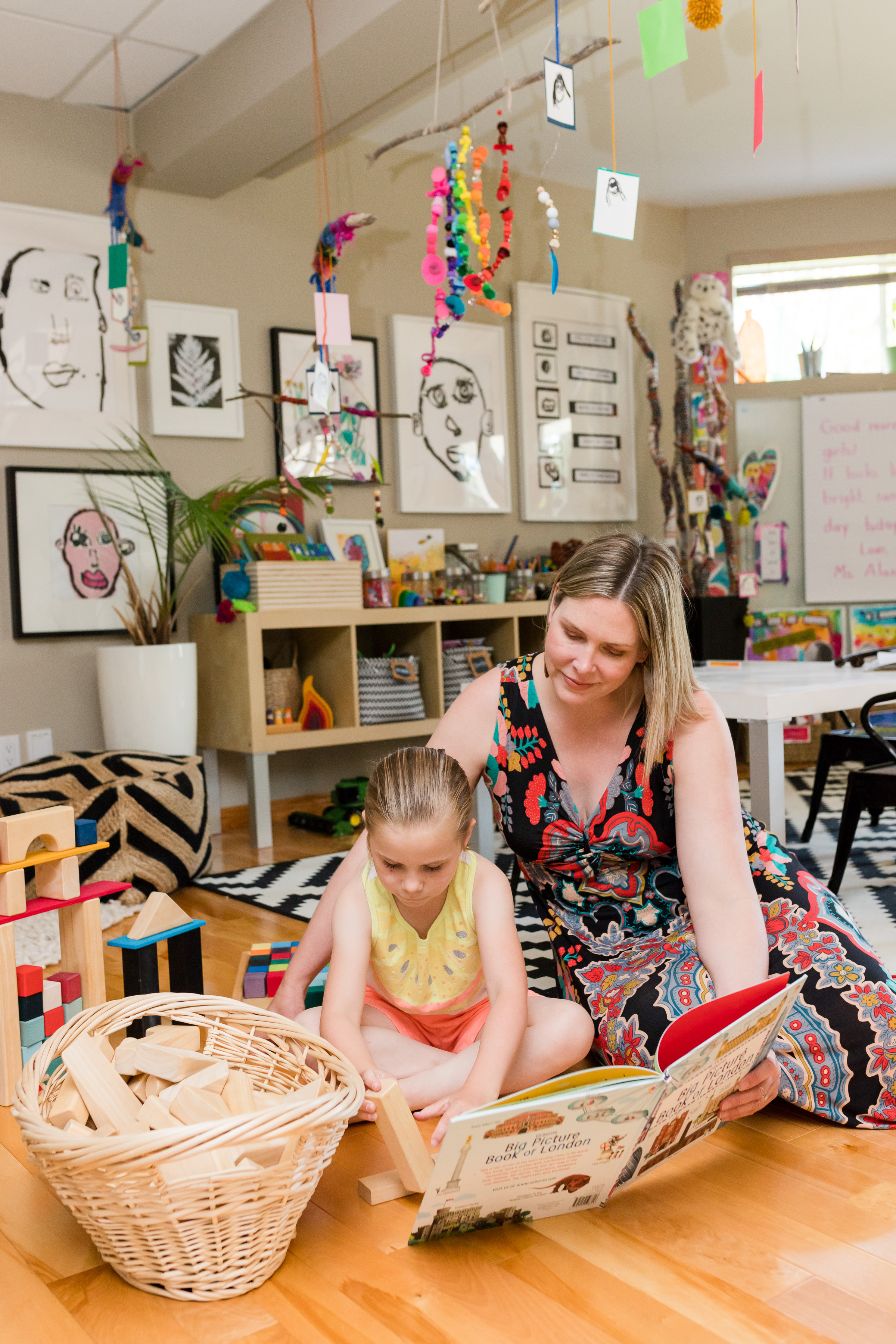
In fact, formal schooling is not even mandatory until the age of 7...
From Worksheets to Wonder: One Hundred Languages of Children
Imagine you're teaching your child about plants.
Now imagine the learning going one of two ways.
- Worksheet style.
Paper, pencil, scissors, glue.
The lesson spans 20 minutes, and your child is done thinking about plants. They move onto the next thing rarely thinking or wondering about plants again.
- Hands-on, Artful Approach.
✅ soil
✅ trowel
✅ real flowers
✅ magnifying glass
✅ seeds
✅ watercolor paint
✅ paintbrush
The investigation and projects span days, even weeks. Your child is noticing, observing, predicting, labeling, creating, investigating, discussing and sharing their learning.

They are delighted, excited, motivated, engaged.
In which scenario would you rather be a participant? Where would YOU rather teach?
Now, I'm not saying "Toss out the workbooks!"
I believe in a balanced, integrated approach that uses children's natural hundred languages of learning. The "sweet spot" that blends the wonder of childhood with more intentional teaching.
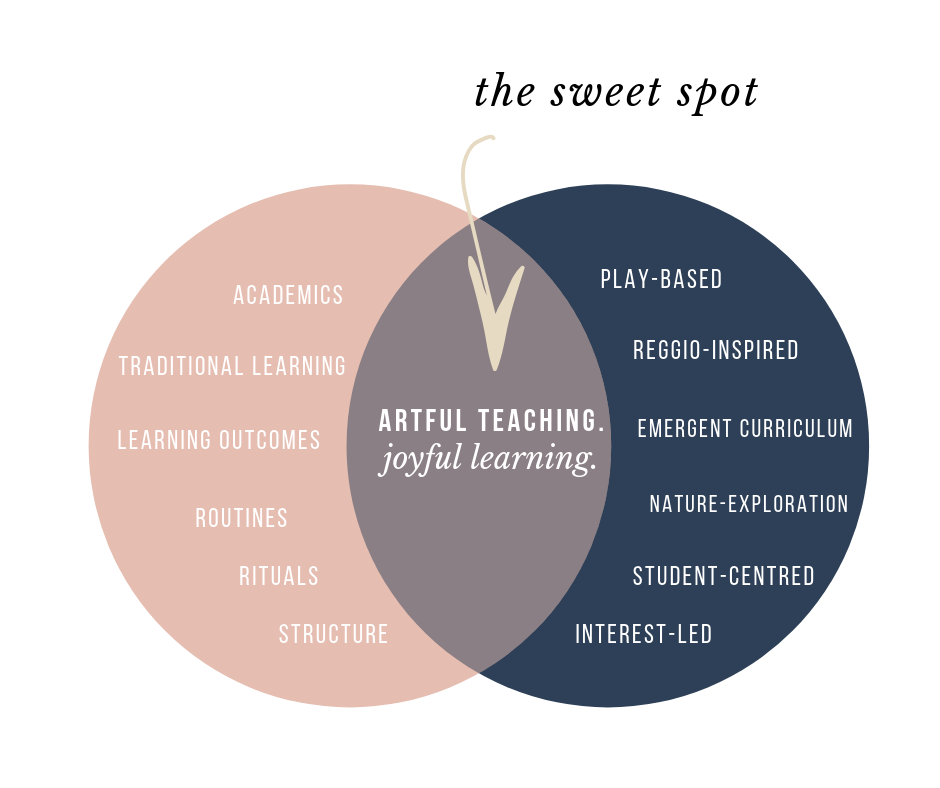 Did you know your ch...
Did you know your ch...
Reggio Made Easy: A Beginner’s Guide to Reggio-Inspired Learning the North American Way

Over ten years ago, I discovered an approach to teaching and learning that would forever transform how I view children, teaching and learning.
As an advocate for the Arts and play-based learning and a lover of inspiring design, the Reggio-Emilia approach to early learning resonated with every fibre of my being.

But what does it mean to be Reggio-inspired, and where did the term come from? And more importantly, how can we - as North American educators and homeschoolers - take inspiration from such an approach, but also remain accountable for the learning outcomes we are expected to teach our children in the context of a public or homeschool education?

Reggio Emilia is a town in Northern Italy, and over 50 years ago at the conclusion of the second World War, a forward thinking phychologist named Loris Malaguzzi re-imagined education for children that would forever change the landscape of teaching and learning in the early years.
Reggio is not a model, or a system that can be rep...
A Reggio-Inspired Thanksgiving Tradition
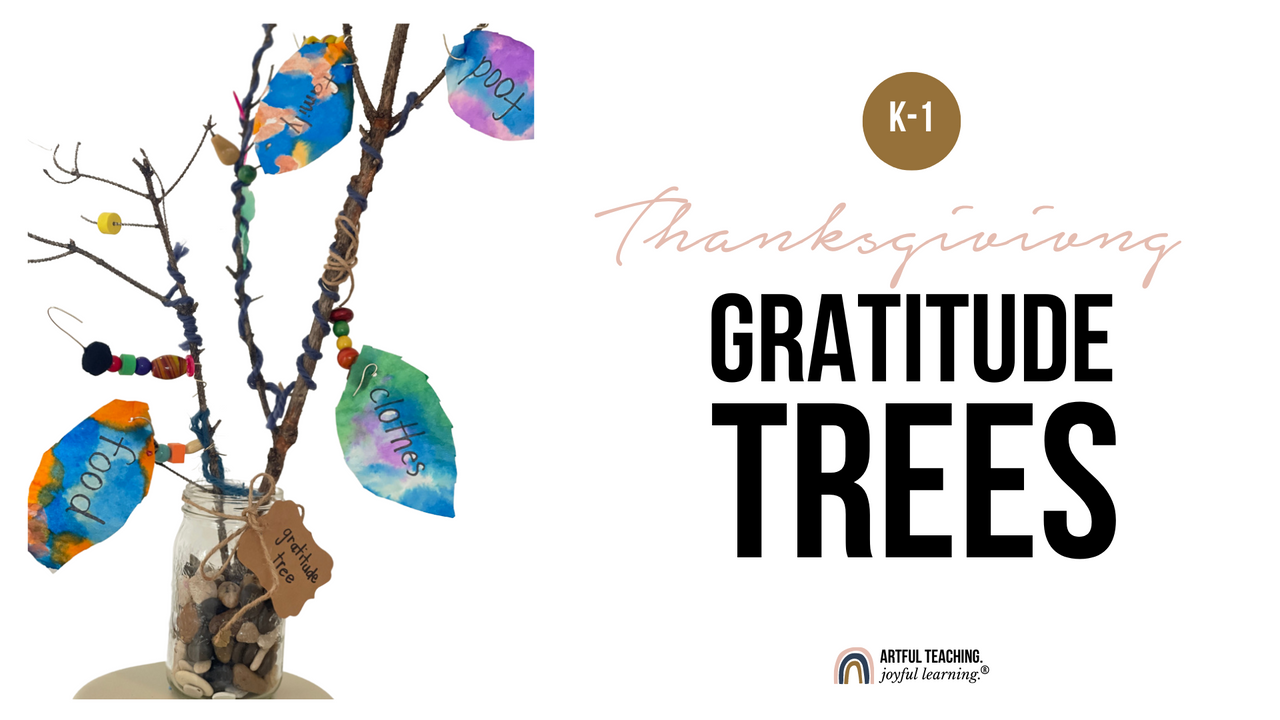
Growing Gratitude Trees: A Reggio-Inspired Thanksgiving Tradition
As we prepare to celebrate Thanksgiving in the US, and as the holiday season approaches, young families begin to create meaningful traditions with families. Some inherited from previous generations, and some newly forged traditions.
As you begin to imagine setting up your Thanksgiving table, imagine a centerpiece that is not only beautiful, but meaningfully child-made, inviting our children to reflect on what it means to be truly thankful.
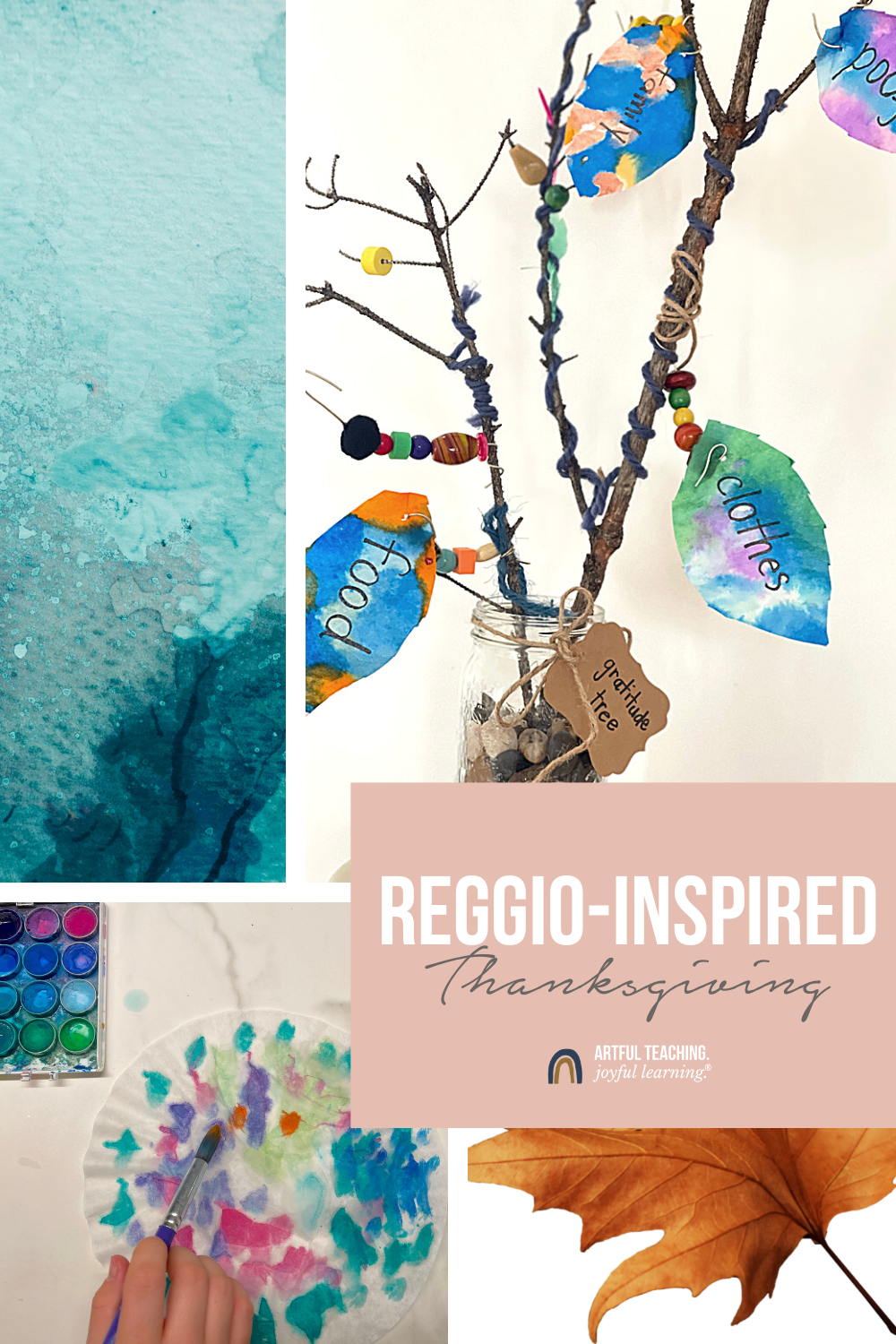
In keeping with a Reggio-inspired approach and the hundred languages of children, this invitation to create is grounded in a process-art approach: no set, cookie-cutter outcome is expected of your child.
Rather, the invitation unfolds with dialogue about gratitude, some beautiful picture books about giving thanks, as well as a watercolor exploration and sculptural loose parts tree where their gratitude grows in the form of watercolor leaves.
What is Gratitude? A Word Splash
Ju...
A Reggio-Inspired Gratitude Project
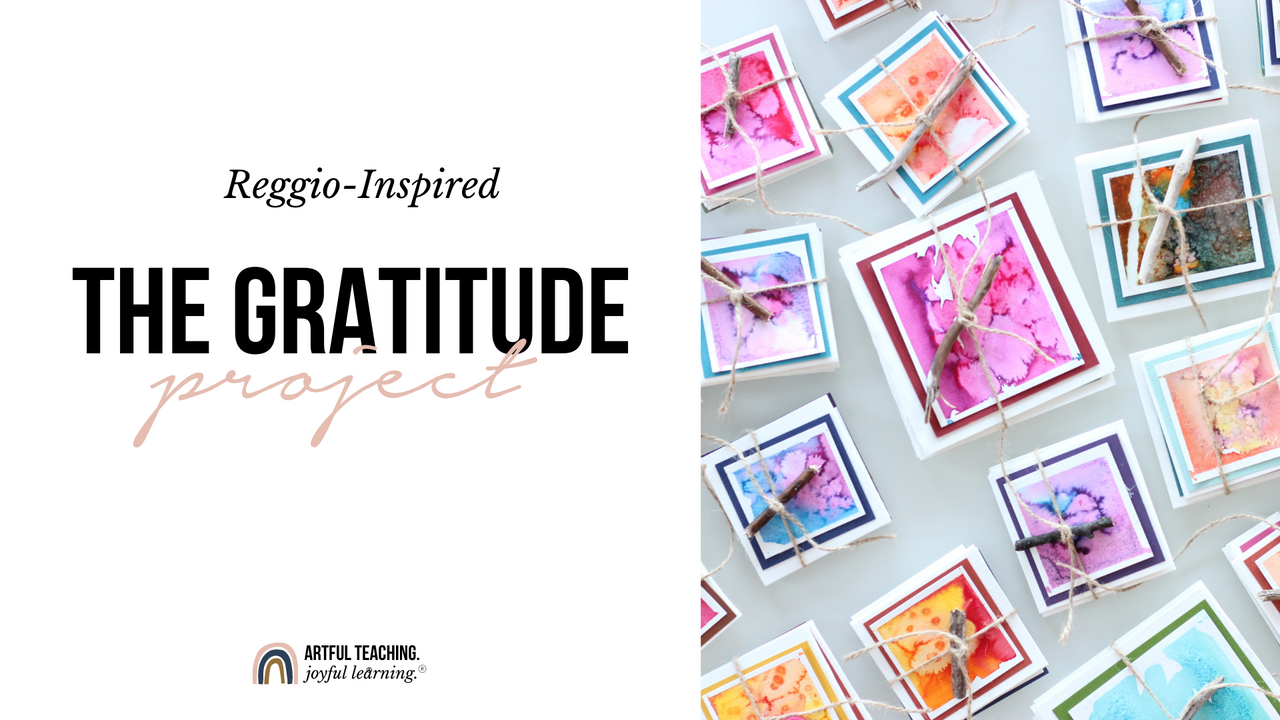
Gratitude is an abstract concept, particularly with young children. So how can we make the concept concrete so that our children practice an attitude of gratitude? These Reggio-inspired, hands-on invitations to create for kindergarteners and early learners are a beautiful way to teach and practice gratitude this Thanksgiving, and throughout the year.
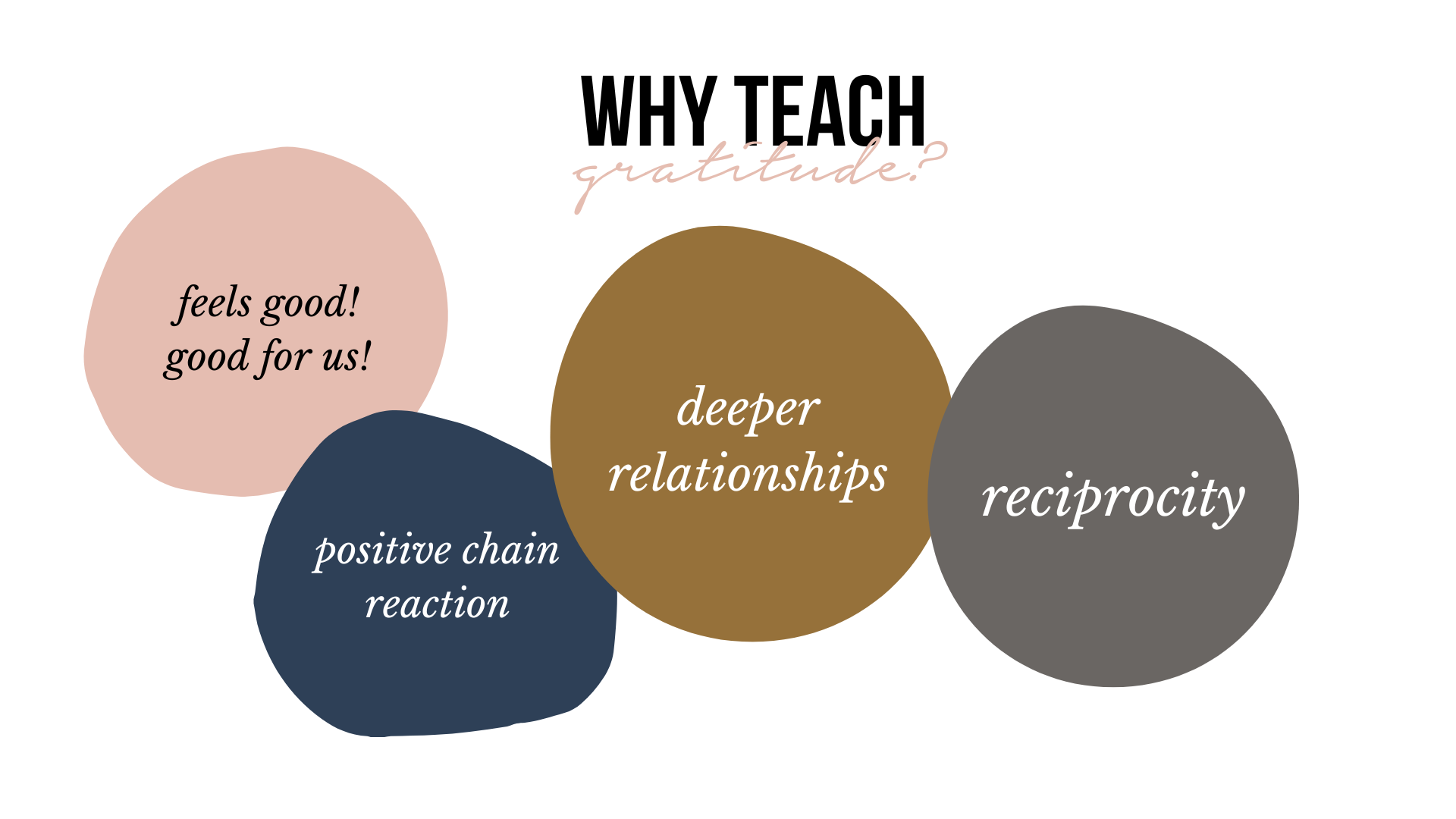
Why TEACH gratitude?
Gratitude feels good! When we feel good, we do good! Having a positive outlook is good for our spirit, body and mind.
Gratitude helps create a positive chain reaction, minimizing our negative perspective: worry, overwhelm, anxiety. When we focus on the good, the good grows! What we magnify with our thoughts and feelings GROWS! Gratitude also builds resilience in us: when we look for the silver lining in dark clouds, when we can find the good - even amongst the negative circumstances (like a cancelled birthday party!), we are able to build a resilient foundation that will serve us when life throws a cu...

